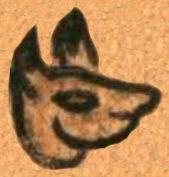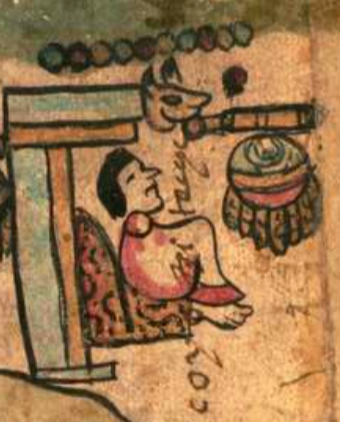Coyotzin (CQ)
This glyph of a coyote (coyotl) head is the name of a lord (tecuhtli), "Coyotzin" (Coyote in the reverential form). The head is shown in profile, looking to the viewer's right. Its one visible eye appears to be open. Its ears are upright. Its coat is brown.
Stephanie Wood
In proximity to the lord is also the date 11-Reed (Matlactli Once Acatl).
Stephanie Wood
coyotzin tecuc...
Coyotzin, tecuhtli
Stephanie Wood
covers ruling men and women of Tecamachalco through 1593
coyotes, animals, animales

coyo(tl), coyote, https://nahuatl.wired-humanities.org/content/coyotl
P[ueblo] Coyotzin Teic[alli]? “Coyotzin's Battle?” [“Revered Coyote” is the pictured man’s name] – battle is symbolized by the chimalli and maquahuitl. Matthew T. McDavitt, “Placenames in the Codex Quetzalecatzin,” unpublished essay shared 2-21-2018.
el coyote (pero, hoy día, es una persona de la ciudad)
Ofelia Cruz Morales
The Codex Quetzalecatzin, aka Mapa de Ecatepec-Huitziltepec, Codex Ehecatepec-Huitziltepec, or Charles Ratton Codex. Library of Congress. https://www.loc.gov/item/2017590521/
The Library of Congress, current custodian of this pictorial Mexican manuscript, hosts a digital version online. It is not copyright protected.


